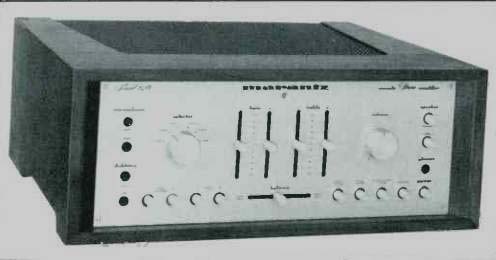
MANUFACTURER'S SPECIFICATIONS:
Power output, 20 Hz to 20 kHz: 70 watts per ch. into 4 ohms, 60 watts into 8 ohms, rms.
THD: Less than 0.2% at rated power
IM: Less than 0.2% at rated power.
Frequency response: 20 to 20 kHz, +1 dB.
Damping factor: Greater than 30.
Inputs: Mic, phono, tape 1, tape 2, tuner, aux.
Dimensions: 15 3/4 by 5 3/4 by 13 1/4 inches deep.
Weight: 27 lbs.
Price: $395.
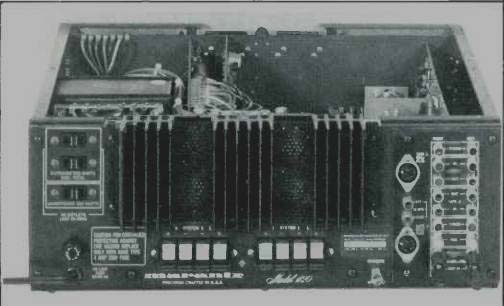
Fig. 1--Rear panel view.
The Marantz 1120 is a versatile integrated amplifier in the medium-high power class having some rather interesting features. It is styled in the workmanlike Marantz tradition with the typical instrumentation kind of panel and metal knobs to match. Actually, there are only two rotary controls-the rest are slides or push-buttons. Microphone and tape dubbing inputs are on the left, then comes the input selector switch and slide controls for bass and treble. There are four of these, one pair for each channel. Next is the volume control and then, at the right are loudspeaker-select push-buttons and a headphone socket. At the bottom are push-button switches for two tape monitors, stereo-mono, low filter, high filter, muting, loudness and power on/off.
In the center is a horizontal slide control for balance. At the rear are the usual input sockets, including two DIN type and preamp-amplifier connections which permit independent operation if so desired. Or of course, an equalizer like the Metrotec or Soundcraftsman can be inserted at this point.
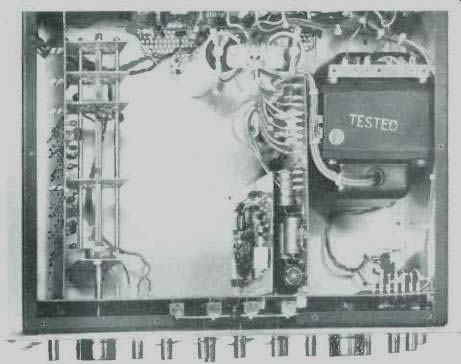
Fig. 2--Inside view.
Yet another possibility is the recording of a program source via the tone control and filter facilities and this method is described in the owner's manual. We were pleased to note that heavy spring-loaded push connectors were used for the loudspeaker outlets. Not only are these much easier to use but there is less chance of shorts with this type than with the tiny screw terminals sometimes used.
Also on the rear panel are three convenience ac sockets--one unswitched and two switched, and one unusual feature: output sockets for a 'scope.
Figure 1 shows the rear panel and figure 2 shows the view inside. Note the large power transformer and the neat layout which will be appreciated by the service engineer.
Circuit Details
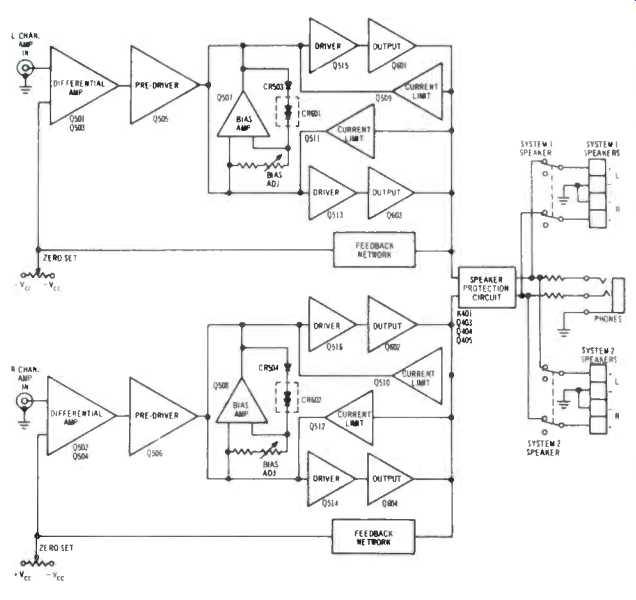
Fig. 3--Block diagram of the amplifier section.
A block diagram of the power amplifier section is shown in figure 3. The output transistors function in a quasi complementary mode at a voltage of 44 plus 44. They are driven by a full complementary driver stage and a current limiting circuit monitors the output current. If this rises to a high level, the drive to the output transistors is automatically cut off. Two more protection circuits are used: thermal switches installed on the output transistor heat sinks and a three-transistor amplifier with a relay which disconnects the loudspeakers if sub-sonic surges occur. It also provides a 5-second delay after switch on--avoiding that annoying "thump."
The preamplifier is fairly straightforward in design although differential input circuits are not that common.
They do cost more but if used properly can give superior signal/noise and handle much greater voltage' swings than most conventional single transistor arrangements. Figure 4 shows the basic circuit. The three transistors Q1, Q2, and Q3 are all part of an opamp, with Q4 providing a constant current source. Equalization is provided by a network connected between Q2 and Q3.
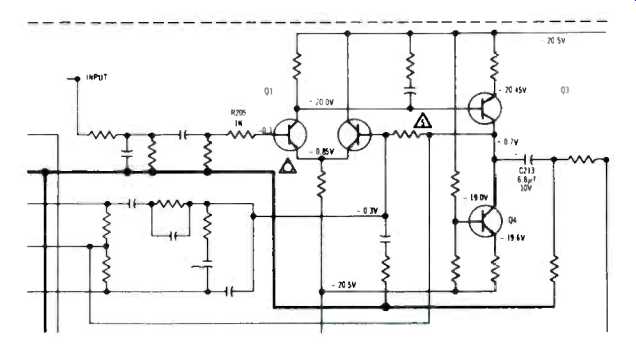
Fig. 4-Preamplifier input stages
Measurements
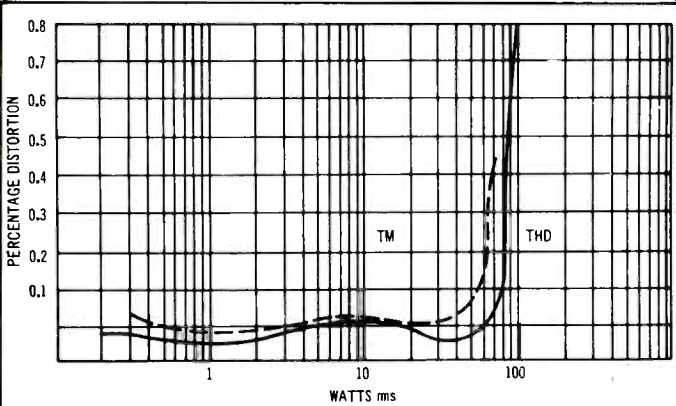
Fig. 5--Power output and distortion
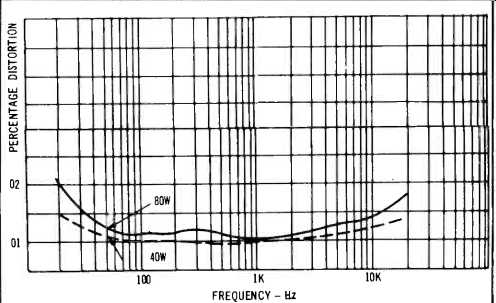
Fig. 6--THD versus frequency
The 1120 is rated at 70 watts per channel into 4 ohms but this appears to be a conservative figure as we measured 82 watts per channel at the specified 0.2% THD. At 1%, power was just under 100 watts per channel, both driven, of course. Power output with 8 ohm loads was 80 watts per channel at 1% THD. Power bandwidth was difficult to measure precisely owing to the action of the protection circuit but it was below 15 Hz to over 50 kHz. Figure 5 shows the THD and IM and figure 6 shows the distortion versus frequency.
Overall frequency response and filter characteristics are given in figure 7. Square wave responses at 70, 1000 Hz and 10 kHz are shown in figure 8, and tone control characteristics in figure 9.
Input sensitivity was 1.3 mV for phono and 100 mV for high level inputs. The phono input could accept a signal of 130 mV before overload. Signal to noise came out at 69 dB and 85 dB respectively. Residual hum and noise was 86 dB. Simulated electrostatic speaker loads were used to test for stability and we can report that any electrostatic or dynamic-electrostatic system can be used without causing trouble.
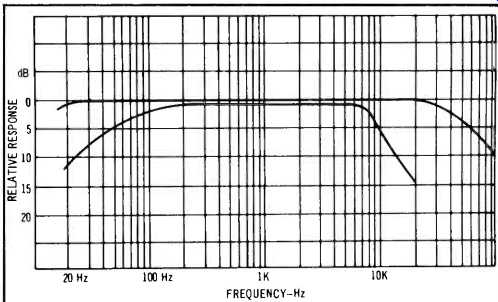
Fig. 7--Frequency response and filter characteristics.

Fig. 8--Square wave responses at A, 70 Hz, B, 1 kHz an C, 10 kHz
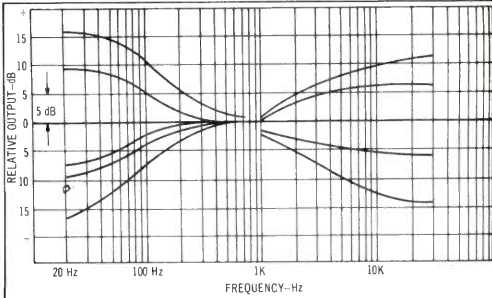
Fig. 9--Tone control characteristics.
Listening Tests
The 1120 was tested with a pair of Imperial 7's which seemed appropriate enough and the combination has been working for about two months. The lab, standard speakers were also used for a period and there was ample power to spare. The turntable was a Thorens 125 Mk. II so the low frequency filter was not required to reduce rumble (unless it was on the record, by no means unknown!) The sharp attenuation below 70 Hz would remove much of the annoying rumble from lower quality record-changers without removing too much of musical value. Many so-called rumble filters start to attenuate at 200 Hz--or even higher! The high frequency filter rolls off from 7 kHz and we did find this facility useful to reduce some wiriness or chromium plating which spoiled string tone on some otherwise good recordings. One or two recent Telefunken discs were bad offenders in this respect. Tape enthusiasts will find that front panel dubbing facility useful--almost essential, in fact.
Like all top-quality amplifiers, the 1120 seemed to have no sound of its own. Overload characteristics were excellent--a point often overlooked--and all controls were easy to use. A horizontal balance control is a very logical way of doing things-at least for two-channel stereo. Summing up then, the Marantz 1120 is a well-made amplifier that more than meets its specifications and, just as important--it should give years of trouble-free service.
-TA., GWT.
(adapted from Audio magazine, May. 1973)
Also see:
Marantz PM-94 Integrated Amplifier (Equip. Profile, Dec. 1988)
Marantz Model 7 Preamp & Model 9 Mono Amp (June 1997)
Marantz Model 2500 Stereo FM/AM Receiver (Feb. 1978)
= = = =